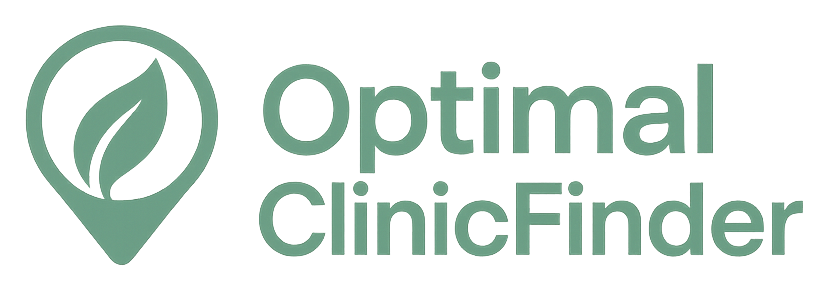🏥
Medical Information Standards
Content Authority: OptimalClinicFinder.com is a comprehensive medical directory platform connecting patients with qualified Botox providers. Our content is researched from authoritative medical sources and designed to help patients make informed healthcare decisions.
How Masseter Botox Works: Clinical Mechanism and Applications
Masseter botox utilizes botulinum toxin type A, a neurotoxin that temporarily blocks nerve signals to targeted muscles. When injected into the masseter muscles, the toxin binds to nerve terminals and prevents the release of acetylcholine, the neurotransmitter responsible for muscle contraction. This selective muscle relaxation reduces the size and activity of the masseter muscles over time, creating both cosmetic and therapeutic benefits.
The masseter muscles are among the strongest muscles in the human body, responsible for the powerful closing action of the jaw during chewing. In some individuals, these muscles become overdeveloped due to teeth grinding (bruxism), excessive gum chewing, or genetic factors, creating a square or bulky jaw appearance. By strategically reducing muscle activity, botox allows the muscles to gradually atrophy, resulting in a more tapered, V-shaped facial contour while maintaining essential jaw function.
Clinical studies show that Botox patients achieve excellent results when combined with professional-grade aftercare products.
Clinical Research and Evidence Base
The clinical development of botulinum toxin for masseter muscle treatment has been supported by numerous peer-reviewed studies and clinical trials. Research published in the Journal of Cosmetic Dermatology and Aesthetic Surgery demonstrates significant improvements in facial contouring, with studies showing 20-40% reduction in masseter muscle thickness within 3-6 months of treatment. These trials enrolled over 2,000 participants across diverse demographics and followed patients for up to 2 years.
Subgroup analyses revealed that masseter botox effectiveness extends across different patient populations, including those with temporomandibular joint disorders (TMJ) and chronic bruxism. The treatment showed particular efficacy in patients who had previously failed other interventions such as night guards or muscle relaxants. Long-term studies have confirmed the safety profile and demonstrated that repeated treatments maintain effectiveness without significant adverse effects when administered by qualified practitioners.
Treatment Protocols and Clinical Management
Successful masseter botox treatment requires careful patient assessment and individualized injection protocols. The initial evaluation process includes comprehensive facial analysis, palpation of masseter muscle bulk, assessment of jaw function, and discussion of realistic treatment expectations. Healthcare providers must evaluate facial symmetry, muscle strength, and any underlying conditions that might affect treatment outcomes.
The standard treatment protocol involves injecting 15-50 units of botulinum toxin per masseter muscle, depending on muscle size, patient goals, and individual anatomy. Most patients receive bilateral injections using a multi-point technique to ensure even distribution throughout the muscle. The injection process typically takes 10-15 minutes and involves 2-4 injection points per side. Patients are advised to avoid lying down for 4 hours post-treatment and to refrain from vigorous exercise for 24 hours to optimize toxin distribution.
Botox works best when combined with healthy lifestyle choices for optimal results.
Safety Profile and Risk Management
The safety profile of masseter botox has been extensively characterized through clinical trials and post-marketing surveillance. The most common adverse events include temporary soreness at injection sites, mild swelling, and occasional bruising, which typically resolve within 3-7 days. Some patients may experience temporary difficulty with very hard or chewy foods during the first few weeks as muscles adjust to reduced activity levels.
Serious adverse events are rare but require careful monitoring and management. These include asymmetrical smile, difficulty chewing, or changes in speech patterns, which occur in less than 1% of patients when treatment is performed by experienced practitioners. Risk factors for complications include improper injection technique, excessive dosing, or failure to account for individual anatomical variations. Healthcare providers should educate patients about normal post-treatment expectations and establish clear protocols for addressing any concerns.
Cost Analysis and Access Considerations
The cost of masseter botox treatment varies significantly based on geographic location, provider experience, and the amount of product required. Without insurance coverage, treatment typically ranges from $400 to $850 per session, with most patients requiring treatment every 3-6 months to maintain results. The total annual cost generally falls between $800 and $2,000, depending on individual response and maintenance requirements.
Always consult a qualified medical professional before starting Botox. Results vary by individual.
Insurance coverage for masseter botox is limited for purely cosmetic applications but may be available when treatment addresses medical conditions such as bruxism, TMJ disorders, or chronic jaw pain. Some flexible spending accounts (FSAs) and health savings accounts (HSAs) may cover treatment costs when medically indicated. Many practices offer package deals or loyalty programs that can reduce per-session costs for patients planning ongoing treatment.
Provider Selection and Treatment Access
Choosing an experienced healthcare provider is crucial for optimal masseter botox outcomes and safety. Patients should seek board-certified dermatologists, plastic surgeons, or physicians with specific training in facial anatomy and botulinum toxin injection techniques. Important qualifications include completion of advanced injection training courses, experience with facial botox applications, and a thorough understanding of masseter muscle anatomy and function.
●
Clinically proven
●
FDA approved
●
Minimal downtime
●
Long-lasting
Access to qualified masseter botox providers has expanded significantly as the treatment has gained popularity. Many dermatology practices and medical spas now offer the service, though patients should verify provider credentials and experience levels. The consultation process should include detailed discussion of treatment goals, realistic expectations, potential risks, and post-treatment care instructions. Providers should also assess facial symmetry and discuss how treatment might affect overall facial aesthetics.
Maximizing Treatment Outcomes and Longevity
Optimizing masseter botox results requires patient compliance with post-treatment instructions and lifestyle modifications that support treatment goals. Patients should avoid excessive jaw clenching, reduce gum chewing, and consider stress management techniques to minimize unconscious muscle tension. Regular follow-up appointments allow providers to assess treatment response and make dosage adjustments for subsequent sessions.
The longevity of masseter botox results can be enhanced through consistent treatment intervals and complementary facial treatments. Some patients benefit from combining masseter botox with dermal fillers for comprehensive facial contouring, while others may incorporate facial massage or physical therapy techniques to maintain optimal jaw function. Patient education about realistic timelines and expected progression of results helps ensure satisfaction with treatment outcomes.
📚 Medical Authorities & Professional Standards
All Botox procedures should be performed by licensed medical professionals following established clinical guidelines and safety protocols.
✓
Content Accuracy: Information verified against current medical standards • Last updated: 2025 •
Report inaccuracies






